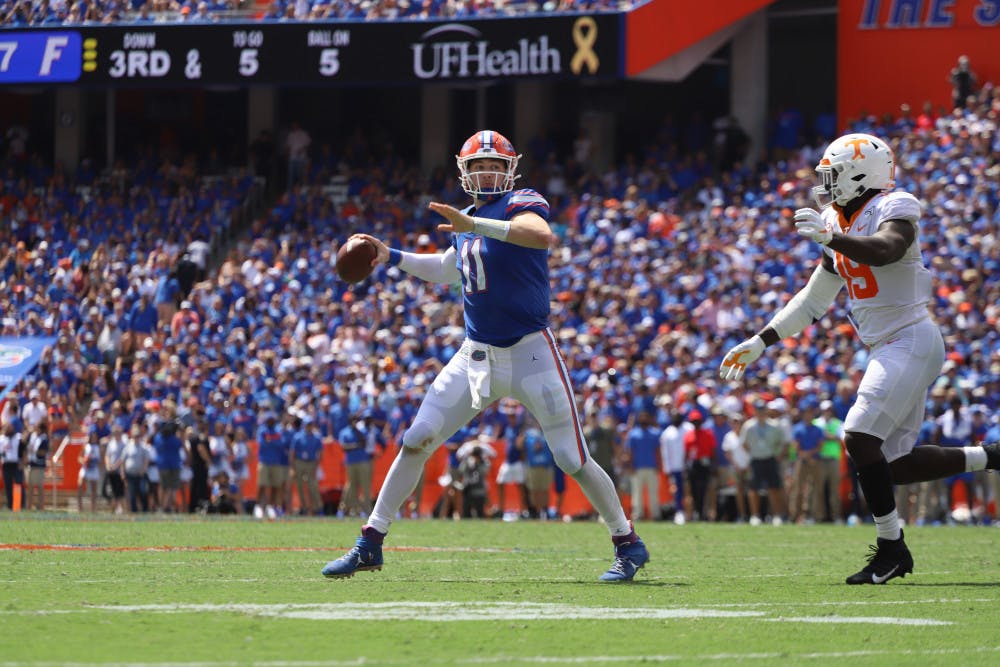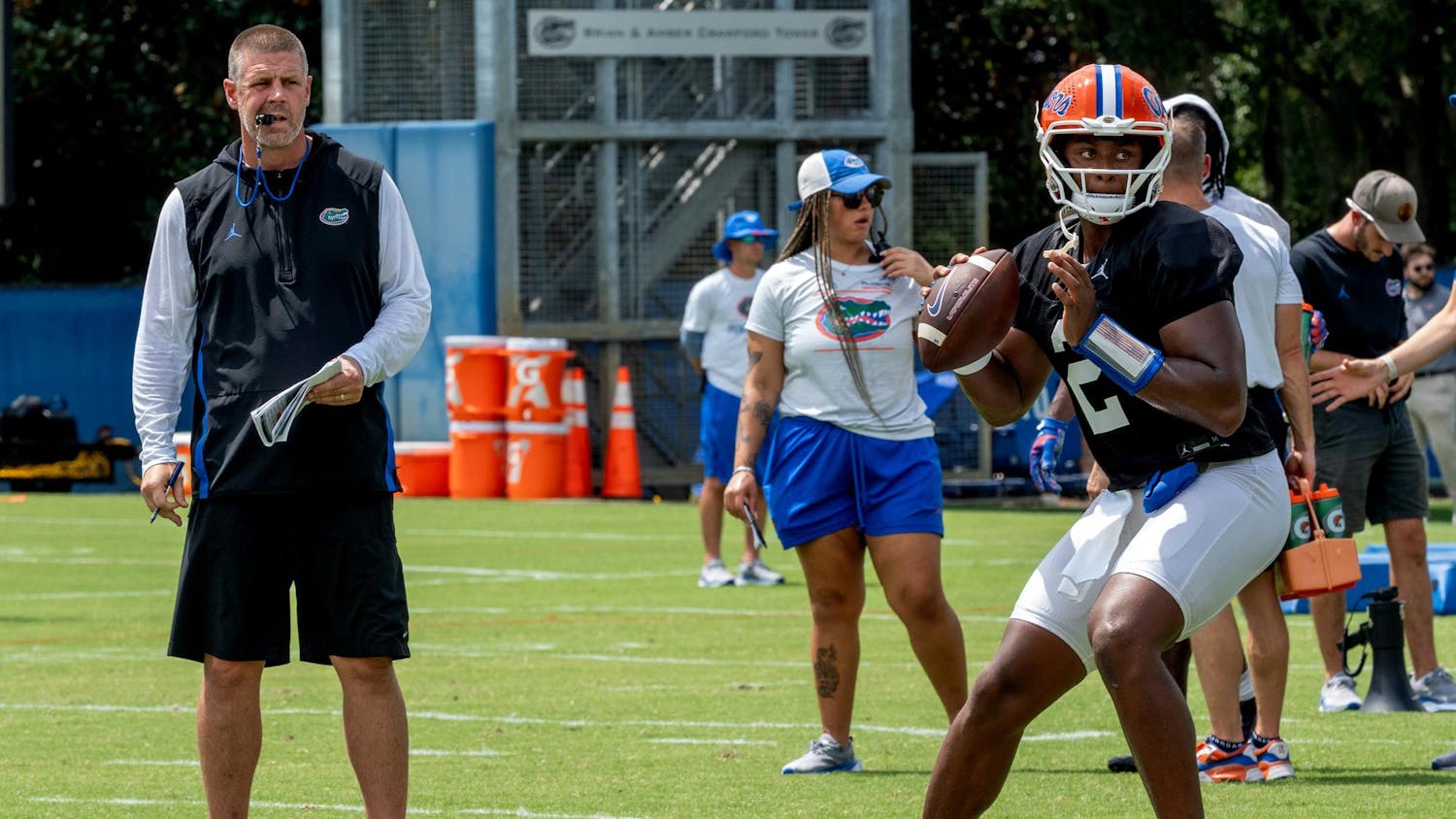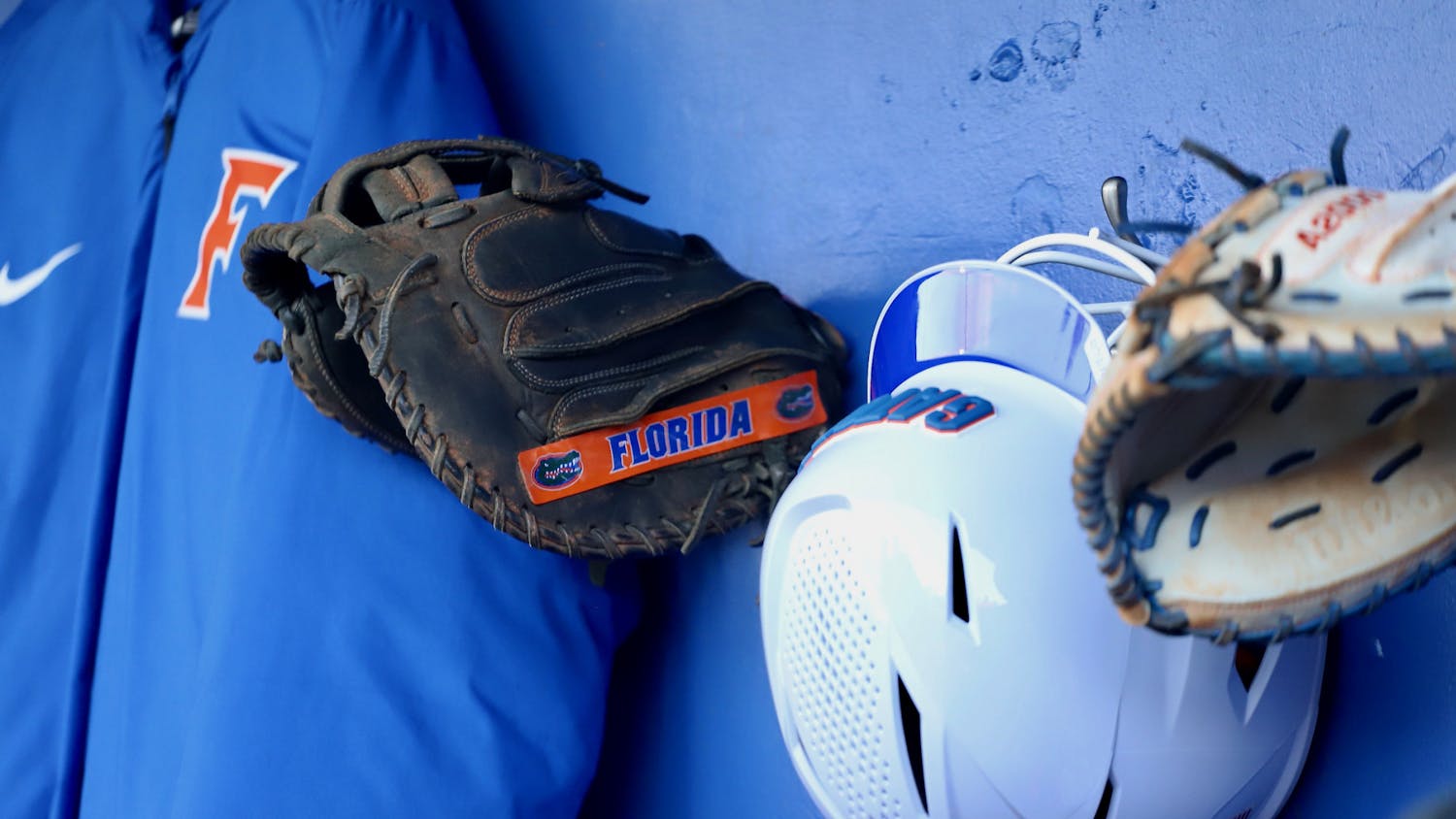The Gators have been must-watch television in 2020, for better or worse. The shootouts that used to be contained to just the Big 12 have migrated to the SEC and made their way to Gainesville. Florida has scored at least 30 points in six of its last seven games dating back to last season.
This is an offense that sports quarterback Kyle Trask, who is a potential Heisman Trophy candidate, one of the best tight ends in the country in Kyle Pitts, human joystick Kadarius Toney and an armada of quality pass-catchers.
This begs the question, how good is the Gators’ offense?
Yes, the passing attack is elite
Trask threw himself and the Gators into the national spotlight Week 1 of the SEC season. Florida went on the road to Oxford, Mississippi, and put up 51 points. Trask completed 30 of 42 passes for 416 yards, six touchdowns and zero interceptions.
And that was just the beginning. Through three games, Trask has completed 71.9% of his passes (fifth in the country), thrown 14 touchdowns (tied for third nationally) to just one interception and is averaging 9.7 yards per attempt (12th).
Trask has ended all three of his starts with a QBR over 90, something he did twice all of last season. His overall QBR of 93.1 is second only to Alabama’s Mac Jones (96.6).
As a result, the Gators are carving up opposing defenses. Florida is averaging 7.4 yards per play (third in the country), 42.3 points (eighth nationally) and 342 yards (11th). According to Pro Football Focus, the Gators are one of four teams to score a touchdown on at least half of their drives.
Strangely enough, they’re only running 62.3 plays per game, which is 71st in the country and the fewest in the SEC. That kind of efficiency is apparent when looking at Expected Points Added (EPA), which values plays like points, and success rates, the percentage of “successful plays” a team has.

Yes, that is Florida placed on top of a Clemson logo in that graph. Yes, Florida has a higher EPA per play (0.30) compared to Clemson (0.28). And yes, that is Florida with the fourth-best EPA per pass (0.50) in the country.
In fact, the Gators have the second-best EPA per play in the country behind Alabama. Florida is once again going full-on Fun ‘n’ Gun offensively after a long dormancy period. The Gators’ offense is currently ranked eighth in ESPN writer Bill Connelly’s SP+ rankings, and it hasn’t been that way since, well, Tim Tebow’s senior year, when UF finished the year in second.

It’s not as if the Gators are relying on big plays, though. UF has one of the best passing success rates in the country, meaning that it’s regularly moving the ball at will. There’s no denying that the Gators’ passing game is one of the most efficient in the country.
Is Trask the most dynamic passer? No, but he doesn’t have to be. Mullen and offensive coordinator Brian Johnson have done a good job adjusting the offense to suit Trask’s strengths.
Yes, receivers are getting lots of separation, catching a pass from Trask and then racing downfield for more yardage. There’s a lot benefitting Trask this year, but it’s hard to look at Florida’s lethal offensive efficiency and not credit the quarterback for it.
Is the run game back in Gainesville?
Midway through 2019, coach Dan Mullen started making significant changes to the offense. The Gators were one of the least efficient teams in the country when it came to running the ball. Florida nearly eliminated the running game altogether, relying more on screen passes, checkdowns and the arm of Trask in short-yardage situations. Starting with the Auburn game, Florida never called more running plays than passing plays on first and second down (also called “early downs”) in a single game for the rest of the season.

Has that trend stayed the same in 2020? It’s only been three games, but it looks like the answer is a firm “yes.”

Despite playing with a lead fairly often, the Gators are still more than happy to throw the ball whenever the opportunity presents itself.
However, the difference between 2019 and 2020 is that Florida isn’t just passing the ball out of necessity. The Gators are letting Kyle Trask cook while still maintaining the semblance of offensive balance.
The disparity between the number of running plays and passing plays isn’t as extreme as it was in 2019, either. The Gators’ most pass-happy game this year was against Ole Miss with a pass-to-run ratio of 1.37. That wouldn’t even be in the top five last year.
"You always play to the strength of your guys, so you go with what's working,” Mullen said leading up to the Texas A&M game. “Like our goal, coming in this week, our goal is to be 50-50, right? I mean, if we can knock them off the ball, run the ball, we'll do that. If they're struggling covering us, we're gonna keep throwing.”
To Florida’s credit, the run game has improved from a miserable 2019 campaign to a decent showing so far. The Gators went from 4.2 yards per carry to 4.8 this year, and their rushing efficiency has been markedly better.

It’s only played three games, but so far, Florida has gone from being one of the worst teams on the ground in the Power Five to 29th in the country in EPA per carry (.03). That’s not going to blow anyone away or anything, but it’s still a big improvement from last season.
Where the Gators’ rushing attack has seen the biggest step forward, however, is in “successful” plays. Florida’s success rate on the ground is 42.4%, which is 21st in the country. And while its EPA per rush on early downs is a flat 0, its success rate is 41.7% (11th).
Essentially, while Florida hasn’t set the world on fire on the ground, it’s still enough to keep the Gators “on schedule” and take some pressure off Trask.
Conclusions
Small sample sizes are always fun. Anything can happen in three games, especially considering the small number of plays that Florida has run this season.
But the early results are promising. “Kyle to Kyle” has been alive and well in 2020, accounting for half of Trask’s touchdown passes. Six different pass-catchers have at least five receptions, four have hit the 100-yard mark already and five have touchdowns.
The run game has looked a lot better, and it seems like Florida has three backs it can just plug and play at will. The offense has been lighting up scoreboards quickly and frequently.
Given the state of SEC defenses, it’s difficult to see any team on UF’s schedule outside of Georgia having any answers for it.
It took a decade of almost nothing but misery, but there’s finally an elite offense in Gainesville.
Contact Brendan Farrell at bfarrell@alligator.org and follow him on Twitter @Bfarrell727.
Florida quarterback Kyle Trask drops back in the Gators' home game versus Tennessee last season. In 2020, Trask has completed 71.9% of his passes, thrown 14 touchdowns to just one interception and is averaging 9.7 yards per attempt.






